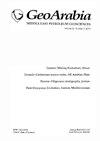Early diagenesis of Late Cretaceous chalk-chert-phosphorite hardgrounds in Jordan: Implications for sedimentation on a Coniacian-Campanian pelagic ramp
引用次数: 40
Abstract
Hardgrounds and omission surfaces are rare in the predominantly pelagic and hemi-pelagic chalk, chert and phosphorite lithofacies association that forms the Upper Cretaceous (Coniacian to Maastrichtian) Belqa Group succession in central Jordan. However, newly-described hardgrounds of regional extent at the base of the Dhiban Chalk Member (Campanian) in central and south Jordan reveal a complex history of sedimentation and early diagenesis. Following drowning of the Turonian carbonate platform during the Coniacian, the chalk-chert-phosphorite association was deposited on a pelagic ramp in fluctuating water depths. The Mujib Chalk and Dhiban Chalk members represent highstand sea levels, separated by a regressive, lowstand chert-rich unit (Tafilah Member). Hardground successions can be traced over 100 km, and show an early diagenetic history of phosphatisation and biogenic silica lithification from opal-A to opal-CT and quartz that resulted in penecontemporaneous chert deformation, followed by submarine bioerosion and colonisation by corals and/or bivalves. Subsequent deposition of detrital, remanié phosphatic chalk passing up into pelagic coccolith-rich ooze reflects a transgressive third-order sea-level rise during the Early Campanian. These events provide a time-frame for early silica diagenesis and subsequent hardground development. Regional variations in the hardground successions and their early diagenesis are attributed to their precursor host sediment and relative palaeogeographic position on a homoclinal ramp at the southern margin of the Neo-Tethys Ocean.约旦晚白垩世白垩-燧石-磷硬岩的早期成岩作用:对coniian - campanian上层斜坡沉积的意义
在约旦中部形成上白垩世(Coniacian - Maastrichtian) Belqa群演替的上层和半上层白垩、燧石和磷矿岩相组合中,硬地和遗漏面是罕见的。然而,在约旦中南部的迪班白垩系(坎帕期)底部新发现的区域性硬地,揭示了复杂的沉积和早期成岩历史。在Coniacian期间,随着Turonian碳酸盐岩台地的淹没,白垩-燧石-磷矿组合沉积在水深波动的上层斜坡上。Mujib Chalk和Dhiban Chalk成员代表高海平面,由一个后退的低水位富燧石单元(Tafilah成员)隔开。硬地演替可以追溯到100多公里,并显示了磷化和生物成因硅石化的早期成岩历史,从蛋白石- a到蛋白石- ct和石英,导致准同生燧石变形,随后是海底生物侵蚀和珊瑚和/或双壳类动物的定殖。随后沉积的碎屑、岩屑、磷酸盐白垩向上传递到富含球石的远洋软泥中,反映了早坎帕纪的海侵三级海平面上升。这些事件为早期硅石成岩作用和随后的硬岩发育提供了一个时间框架。硬地层序及其早期成岩作用的区域差异主要归因于其前体寄主沉积和新特提斯洋南缘同斜斜坡上的相对古地理位置。
本文章由计算机程序翻译,如有差异,请以英文原文为准。
求助全文
约1分钟内获得全文
求助全文
来源期刊

Geoarabia
地学-地球科学综合
自引率
0.00%
发文量
0
审稿时长
>12 weeks
期刊介绍:
Cessation. Published from 1996 to 2015, GeoArabia, The Journal of the Middle Eastern Geosciences was a quarterly journal covering the petroleum geosciences in the Middle East. The journal covers subjects such as: - sedimentology - tectonics - geophysics - petroleum reservoir characterization
 求助内容:
求助内容: 应助结果提醒方式:
应助结果提醒方式:


